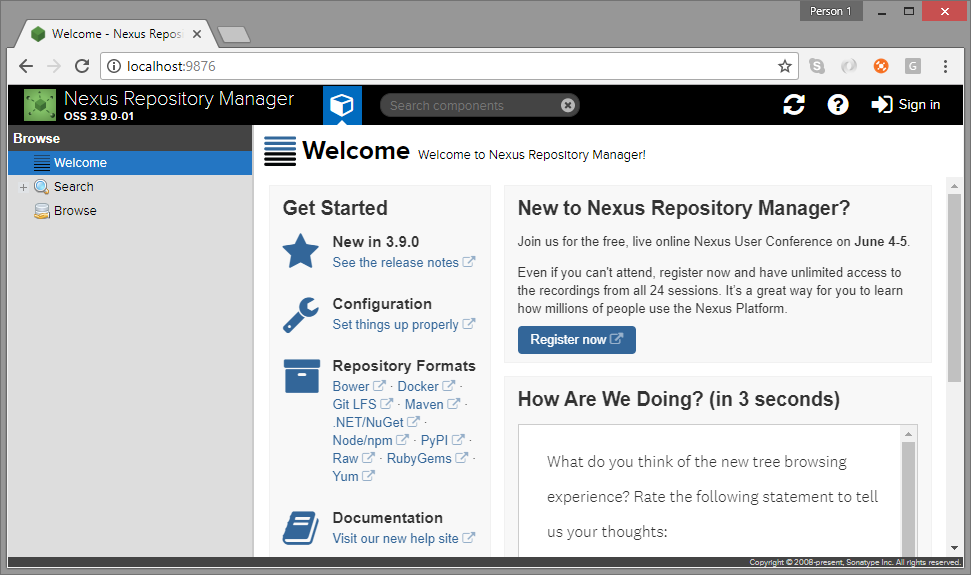
Next, verify the Nexus with the following command: tail -f /opt/nexus/sonatype-work/nexus3/log/nexus.log Save and close the file then start the Nexxus service with the following command: sudo -u nexus /opt/nexus/bin/nexus start Uncomment and change the following line with nexus user: run_as_user="nexus" Save and close the file then edit the nexus.rc file and define the run as user: nano /opt/nexus/bin/nexus.rc Djava.io.tmpdir=./sonatype-work/nexus3/tmp XX:LogFile=./sonatype-work/nexus3/log/jvm.log Set Java max memory size and replaced “./sonatype-work” with “./sonatype-work”: -Xms1024m Next, edit the nexus.vmoptions configuration file and define max memory size: nano /opt/nexus/bin/nexus.vmoptions Next, set proper ownership to the nexus directory by running the following command: chown -R nexus:nexus /opt/nexus Once the download is completed, extract the downloaded file to the /opt/nexus directory by running the following command: tar xzf nexus-3.29. -C /opt/nexus -strip-components=1 Next, create a directory for Nexus and download the latest version of Nexus with the following command: mkdir /opt/nexus You can do it with by running following command: echo "nexus ALL=(ALL) NOPASSWD: ALL" > /etc/sudoers.d/nexus Next, allows nexus user to run all user with sudo without any password. You can create it by running the following command: useradd -M -d /opt/nexus -s /bin/bash -r nexus Install Nexusīefore starting, you will need to create a separate user to run Nexus. Once the Java is installed, you can proceed to the next step. OpenJDK 64-Bit VPS Server VM (build 25.282-b08, mixed mode) You should get the following output: openjdk version "1.8.0_282" You can update them using the following command:

You can also integrate Nexus with your existing user and authentication systems like, LDAP and Atlassian Crowd. It provides support for Gradle, Ant, Maven and Ivy, and allows dev to manage components through binaries, containers, assemblies, and finished goods. It is a single source of all components, binaries, and build artifacts.

It allows you to collect, and manage your dependencies and makes it easier to distribute your software.

Nexus is a repository manages that provides a platform that protects your entire software development lifecycle.



 0 kommentar(er)
0 kommentar(er)
